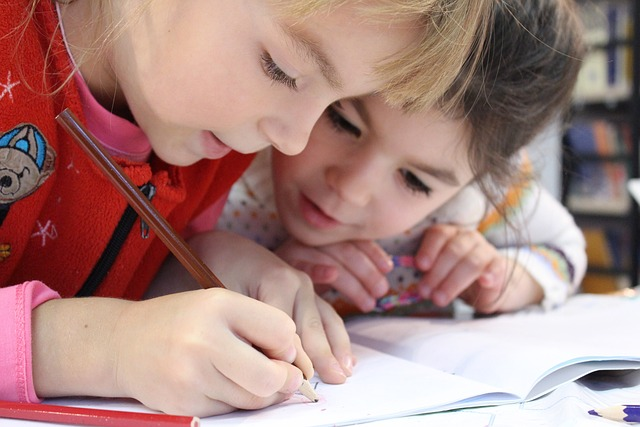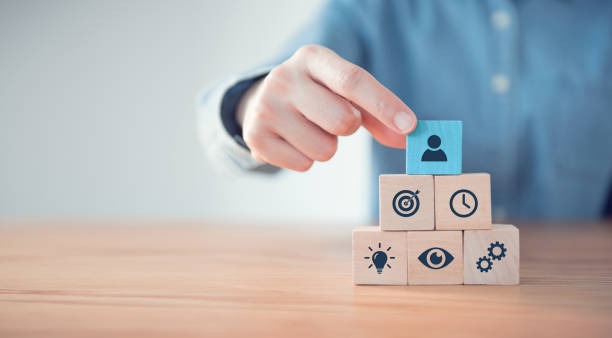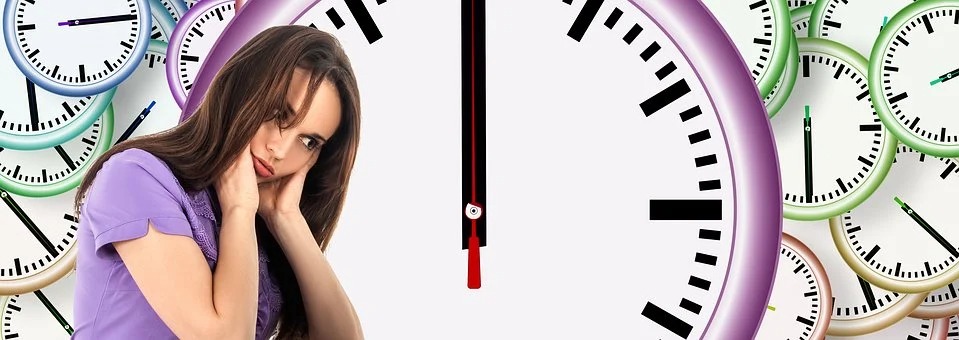
Have you ever felt as though your mind operates like a high-octane race car, yet you feel you’re mired in peak-hour gridlock? That’s a snapshot of life for people with ADHD. However, in the realm of employment, this ‘gridlock’ can morph into a ‘speedway’ with the ideal vocation. We’re embarking on an exploration into the kaleidoscopic universe of career prospects for adults with ADHD, highlighting how an ADHD diagnosis and your diagnostic status won’t hinder you from finding a fulfilling job.
Envision a workplace where your intense focus morphs into a formidable asset, and your inventiveness is the crowning glory. Eager to transform your ADHD characteristics into professional career success? Let’s delve into how your ADHD brain is not merely a hurdle but a substantial prospect to succeed in today’s labor market.
Understanding ADHD
ADHD, or Attention-Deficit/Hyperactivity Disorder, is a neurological disorder that affects both children and adults. Understanding its symptoms is crucial for early diagnosis and effective management.
ADHD is a medical condition characterized by patterns of inattention, hyperactivity, and impulsivity that interfere with work related functioning or development. It has been recognized for over a century, yet misconceptions on ADHD still abound.
The primary symptoms of ADHD are inattentiveness, hyperactivity, and impulsivity. Each of these core symptoms manifests in different ways. Any individual with severe ADHD is classified as a disability under the Americans with Disabilities Act.
The Importance Of Professional Help In Managing ADHD
Professional help plays a pivotal role in both mental health and the effective management of ADHD. This disorder, often complex and multifaceted, requires a nuanced approach that only trained professionals can provide.
ADHD Traits And Workplace Strengths
Globally, over 366 million adults are living with ADHD. This condition often endows individuals with profound concentration and originality, skills that are immensely beneficial in numerous professions.
Let’s examine examples of how these attributes can be advantageous in a professional setting:
Profound Concentration
People with ADHD have a notable propensity for deeply immersing themselves in intriguing tasks, surpassing others in sustained attention. This characteristic is exceptionally valuable in roles necessitating:
- Deep-seated focus
- Meticulous rumination
- Distinctive creativity
Ingenious Ideation
Adult ADHD often showcase remarkable inventiveness or creative thinking. Their distinct cognitive pathways forge avenues for unprecedented ideas and solutions, particularly beneficial in fields like marketing and design or any position where ingenuity and novel thoughts are paramount.
Flexibility In Adaptation
Life with ADHD tend to involves continual adjustments to constant change, endowing these individuals with remarkable adaptability and resilience.
In fluid careers, this capacity for rapid acclimatization is a considerable advantage, aiding in overcoming new challenges and flourishing in diverse situations.
Vibrancy And Ardor
Many with ADHD radiate copious energy and fervor, inspiring their peers and accelerating project momentum. This attribute is especially advantageous in leadership, collaborative, or passion-fueled jobs, where a motivating and dynamic presence is essential.
Workplace Hurdles For ADHD Adults
Alongside their strengths, adults with ADHD often encounter specific workplace issues and challenges in the workplace. If you’re living with ADHD, you might struggle with aspects of a structured job like:
Distractions And Time Mastery
A primary obstacle for many is contending with diversions or having a short attention span. In bustling or multitasking environments, sustaining focus can be challenging. Estimating task durations accurately is often difficult, typically leading to underestimation.
Organizational Acumen
Achieving organizational efficiency is another barrier. Task management, workspace orderliness, and prioritizing responsibilities can be daunting, particularly in autonomous or detail-focused roles.

Receptivity To Critique And Social Interplay
Acute sensitivity to criticism may complicate workplace social dynamics. While this sensitivity can heighten empathy, it might also lead to misinterpretation of feedback or increased stress in collaborative environments.
Consistency In Output
The fluctuating nature of ADHD symptoms can make consistent performance elusive, potentially causing misunderstandings with supervisors or colleagues not well-versed in ADHD.
Optimal Career Paths For ADHD Adults:
Want to know what the best ADHD friendly jobs? Believe it or not, there’s a broad range of options available out there. Take these for example:
1. Creative Domains
Utilize your imagination in art, design, and entertainment, where ADHD traits can fuel creativity and unique perspectives. A writer, artist, or other roles in fashion and cooking are some examples. Creative jobs can be gratifying.
2. Technology And IT
This rapidly evolving sector suits ADHD adults well, as they often thrive in dynamic, changeable environments. Software development like making apps, cybersecurity, and digital marketing are exemplary roles.
3. Entrepreneurial Ventures
ADHD adults often excel in creating their businesses and become successful entrepreneurs, leveraging their inventiveness, enthusiasm, and adaptability. Entrepreneurship offers flexibility and aligns with ADHD strengths, so they can be a good small business owner, work independently, and be their own boss.
4. Educational And Coaching Roles
Imparting knowledge and energy in educational or coaching capacities can be rewarding (i.e., career counselor). The unconventional thinking and enthusiasm of ADHD adults can inspire and aid others.
5. Sales And Marketing
Utilize persuasive skills, enthusiasm, and creativity in these dynamic roles. Sales and marketing demand fresh ideas and align well with the strengths of ADHD individuals.
Specific Job Roles Tailored for ADHD Adults
Many adults with ADHD find the aforementioned industries stimulating and rewarding. For more specific recommendations, consider exploring these ADHD-friendly jobs:
Graphic Designer
Graphic design is an ideal field for ADHD adults, blending creative expression with an intense focus on singular tasks, an area where individuals with ADHD often excel. This role is an excellent fit due to its combination of creativity, technology, flexibility, and acts as a unique creative challenge in ones creativity.
Software Developer
Software development is another role where ADHD traits can be advantageous, involving problem-solving, innovative thinking, and periods of deep focus—areas where ADHD adults can excel. The dynamic nature of this field, with constant learning and adaptation, aligns well with the ADHD mindset.
Business Owner
Entrepreneurship allows ADHD adults to craft a work environment tailored to their strengths and needs (and become their own boss!). As business owners, they can direct their creativity, drive, and adaptability toward building something meaningful and personally fulfilling.
Event Planner
Event planning, a fast paced and dynamic role, is highly suitable for individuals with ADHD. It requires creativity, problem-solving, and multitasking abilities—all areas where ADHD adults often excel.
Teacher Or Trainer
Teaching or training (like being police officers) enables ADHD adults to impart their knowledge and enthusiasm in a dynamic setting. Their capability to engage and motivate is particularly effective in these roles, making learning an enjoyable and interactive experience.

Workplace Accommodations for ADHD
Workplace accommodations for adults with ADHD are crucial for several reasons. These accommodations enable individuals with ADHD to harness their unique strengths and mitigate challenges related to focus, organization, and time management.
By crafting an environment that caters to specific needs, such as flexible work schedules, quiet workspaces, or even unconstrained creative generation, employers empower ADHD employees to excel. This not only boosts productivity but also cultivates a sense of belonging and acceptance.
Moreover, accommodations in the workplace are essential for fostering diversity and inclusivity. Acknowledging and supporting the diverse needs of employees with ADHD signifies a commitment to a varied workforce where different perspectives and methodologies are valued.
This inclusivity benefits not only individuals with ADHD but also enriches the organizational culture, leading to a more inventive, dynamic, and innovative workplace.
Let’s examine some workplace accommodations that can significantly aid adults with ADHD:
- Flexible Work Schedules: Permitting flexible hours can assist ADHD employees in managing their productivity fluctuations more effectively, leading to enhanced focus and output.
- Structured Environments: Providing a structured setting with clear expectations and deadlines can aid in managing ADHD symptoms. Tools like checklists, schedules, and regular feedback can be extremely beneficial.
- Quiet Workspaces: Offering a tranquil workspace or the option for noise-canceling headphones can help reduce distractions, enabling ADHD employees to focus better on their tasks.
- Technological Tools: Utilizing technology aids like project management software or digital organizers can assist ADHD adults in keeping track of their responsibilities and managing their time more efficiently.
Strategies For Job Hunting with ADHD
If you’re an adult with ADHD embarking on or daunted by the job search process, we’re here to support you. Here are some strategies to aid you if you seek jobs that allow you to thrive as someone with Attention Deficit Hyperactivity Disorder:
Tailoring Your Resume
Emphasize the skills and experiences that resonate with the strengths of ADHD, such as creativity, problem-solving abilities, and adaptability. It’s crucial to portray your ADHD traits as assets.
Preparing For Interviews
Rehearse responses to typical interview queries, focusing on how your ADHD traits have positively influenced your work. Be prepared to discuss how you manage challenges and leverage your strengths.
Networking
Utilizing professional networks can be particularly important and advantageous. Participating in industry events or joining relevant online communities can lead to job opportunities for adults with ADHD.
Choosing the right job as an adult with ADHD involves understanding your unique strengths and needs, and is a form of risk taking. It’s essential to know whether you thrive in structured jobs or flexible environments. Assessing your needs helps find a career that resonates with your passion and keeps you engaged. By following these steps, you can find a fulfilling career that aligns with your abilities and aspirations.
In Conclusion
And there we have it! A comprehensive overview of the dynamic, vivid, and attainable realm of career opportunities for adults with ADHD. Remember, your brain is not merely a maelstrom of distractions; it’s a repository of creativity, energy, and untapped potential.
Whether you’re crafting the next trending app or spearheading a team with innovative strategies, your ADHD traits are your clandestine arsenal. So, embrace your unique strengths and let them steer you toward a vocation that not only sustains you financially but also brings out your best.
Here’s to discovering the ideal career path where your ADHD is not just acknowledged, but celebrated. Cheers to your professional success!
Frequently Asked Questions (FAQs)





























